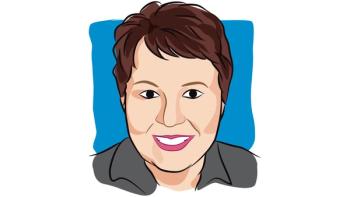
Innovative Breast Cancer Treatment is Lagging
Although breast cancer is commonly diagnosed in the United States, patients are left with unmet needs.
October is breast cancer awareness month. Some may ask why we need to raise awareness of one of the most common forms of cancer, with roughly 1 in 8 women (approximately 12%) in the United States developing the disease over the course of their lifetime. The reason is because of an equally staggering statistic: over 40,000 women in the U.S. are expected to die from breast cancer in 2019. A lack of innovation in the space, coupled with a difficulty in treating the disease itself, have left patients with an overwhelming unmet need.
My mom received a breast cancer diagnosis in the 90s, before genomics and the genetic drivers of cancer were well understood. But despite the scientific and medical strides we’ve made as an industry since this time period, treatment options haven’t changed all that much in the last few decades. The standard-of-care for patients with metastatic breast cancer is still paclitaxel — an age-old chemotherapy treatment that doesn’t offer much meaningful benefit — and women are still forced to cope with large, disfiguring mastectomy scars.
If there is such a huge number of individuals affected by breast cancer, why has the lack of innovation persisted for so long? Why are there still so many deaths?
For one, research into breast cancer is relatively new, at least when compared to other indications and diseases. For decades — up until the 1980’s, really — clinical trials excluded women, with the thinking that men categorically represented the body. Because women haven’t been treated with parody in the medical system, we are a decade or two behind in our scientific understanding and drug development. On another hand, breast cancer is a notoriously difficult cancer to treat, and it’s been challenging to identify targets and develop effective therapies.
But the industry is beginning to move the needle on breast cancer, notably in immuno-oncology.
I began studying viruses in a Ph.D. program at the University of Calgary shortly after learning of my mom’s diagnosis. My research examined how viruses affected cancerous tissue, and we coincidentally happened to be studying breast cancer cell lines. We found that viruses are excellent at infecting breast cancer tumors, flagging these problem areas to the immune system — essentially turning “cold” tumors “hot.” Now, 20 years later, Oncolytics Biotech, which I serve as president and CEO, is preparing for a phase 3 clinical trial investigating our oncolytic virus in patients with metastatic breast cancer.
But advancements in immuno-oncology for breast cancer extend beyond oncolytic viruses. We’re seeing that checkpoint inhibitors are particularly effective in targeting and destroying breast cancer tissue, especially in triple-negative breast cancer — one of the deadliest forms of the disease. Even better, checkpoint inhibitors lend themselves well to being used in combination with other immunotherapies, such as oncolytic viruses. If we’re going to make meaningful strides in improving outcomes for this disease, it will be necessary to determine how we can use these therapies synergistically to maximize their effectiveness.
Immunotherapy offers more than better survival rates for patients. It allows people with cancer to regain control over their own bodies. Part of the reason cancer is such a difficult disease to overcome, both physically and mentally, is because patients must comprehend that their own cells have turned against them. In activating the immune system to fight off cancer, immunotherapy grants control back to the patient.
My mom turned 80 last January. I’m grateful that the treatments available to her at the time were effective, but I know they have failed millions of other patients. This breast cancer awareness month, I’m recognizing the strides that have been made for patients with breast cancer, as well as the ones that still need to be made for the hundreds of thousands affected.





